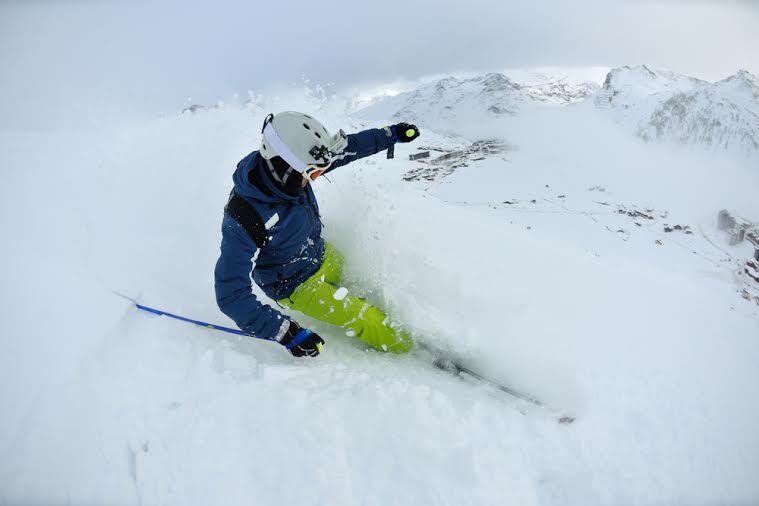The 2014 US Open Tennis tournament was filled with ups and downs this year. Mirin Cilic beat out some top seeded players to win the men’s championship and the favorite on the women’s side, Serena Williams won the title. Years of training, wins and losses have been part of any tennis player’s repertoire, so have injuries.

Wrist injuries are common for tennis players and elite professionals. The anatomic location of the wrist and its major role in the kinetic chain needed in stroke production, it is unfortunately a common site of pain and disability. Often, the pain presents on the pinkie-side, or ulnar side, of the wrist.
Many players experience this ulnar pain in the non-dominant hand during two-handed backhand strokes. In this stroke, the top hand is placed in extreme ulnar deviation and extension, while dynamically moving from supination to pronation. This same motion-type occurs in many tennis strokes, and as such can lead to acute and chronic ulnar wrist injuries.
Tennis players can present with an acute event of sudden onset – either after a violent fall with the wrist in extension and pronation/supination, or after hitting the tennis ball and having an immediate feeling of ulnar wrist pain. According to Dr. Weil, “Ulnar sided wrist pain in tennis players can often be due to tendinitis and can be treated in a conservative fashion. Sometimes degeneration of the cartilage of the wrist can occur.
If you are experiencing pain for more than a few days while playing tennis an evaluation by an orthopedic surgeon is recommended.” When the presentation of pain is chronic and insidious, the ulnar wrist pain arises over the course of days or weeks, and the athlete usually cannot recall a single inciting injury.
Wrist injuries in tennis players often result from over-use, improper technique, and even using the wrong equipment. Also, excessive wrist motion during the stroke will predispose a player to injury. Some things to consider to help prevent ulnar wrist pain:
- Equipment: Using the wrong grip size, wrong strings, and improper string tension can all lead to wrist pain. The grip size can determine the amount of force needed to hold the racket through the stroke, leading to increased firmness of grip and potential injury. Too firm a grip can restrict free movement of the arm. The grip should be only as firm as necessary to ensure proper stroke technique.
- Grip: Extreme grips like a Western will compromise the position of the wrist, forearm, and elbow which places additional stress on the adjacent muscles and tendons. For the two-handed backhand player, use of the continental grip on the bottom hand and the Eastern forehand grip on the top hand is preferable. Players using extreme grips (Western) place their wrist and forearm in positions that place additional stress on the muscles, tendons, and ligaments and can predispose them to injury. Additionally, another breakdown in technique is when the player uses the wrist and hand as primary force generators during ball strike. The wrist and hand must be viewed as links in the kinetic chain whereby large forces generated from the ground, lower extremity, and trunk are transferred.
- Position of wrist at ball strike: In the two handed back-hand, the tendency for some players is to place the top hand in extreme extension and ulnar deviation prior to ball strike. The thought is to power the ball into creating topspin at contact. By using the Eastern Forehand grip in the top hand (left hand in right handed players) and by incorporating the players’ core and lower body/legs into the stroke properly, the lower body/core can load the energy and transfer load and energy up the kinetic chain into the arm and wrist to abate some of the torsional stress on the wrist.
- Physical: Due to the physical demands of tennis and all of the repetition that is involved, tennis play causes the dominant playing side to over-develop which leads to overall body muscle imbalance. Exercises that strengthen the wrist, forearm and elbow include wrist curls, radial and ulnar deviation resistance maneuvers, and ball dribble off the floor then wall to improve both strength and endurance.
Helpful tips to prevent wrist injury:
1) Choose your equipment carefully, take into account level of play and age.
2) Be sure to use proper grip and technical skills, and be open to reviewing these periodically, even using video, making note of changes in swing mechanics pre and post ball strike.
3) Have a daily routine to include strength and flexibility exercises that increase stamina and maintain range of motion; this should include the hands, wrists, forearms, elbows, and shoulders.
4) Have elastic bands in your bag to allow you to perform strength exercises anytime and have them easily accessible; also, you should be able to perform this routine away from the supervision of coaches, trainers, and parents.
5) Perform strengthening exercises after practice or match play or on “off” days where not hitting is done to avoid muscle fatigue during play.
If you believe you are suffering from a tennis-related injury and need specialized orthopedic care, Orthopedic Specialists of Seattle provide excellent treatment options available for you. Please feel free to contact OSS at (206) 633-8100 to schedule an appointment.

